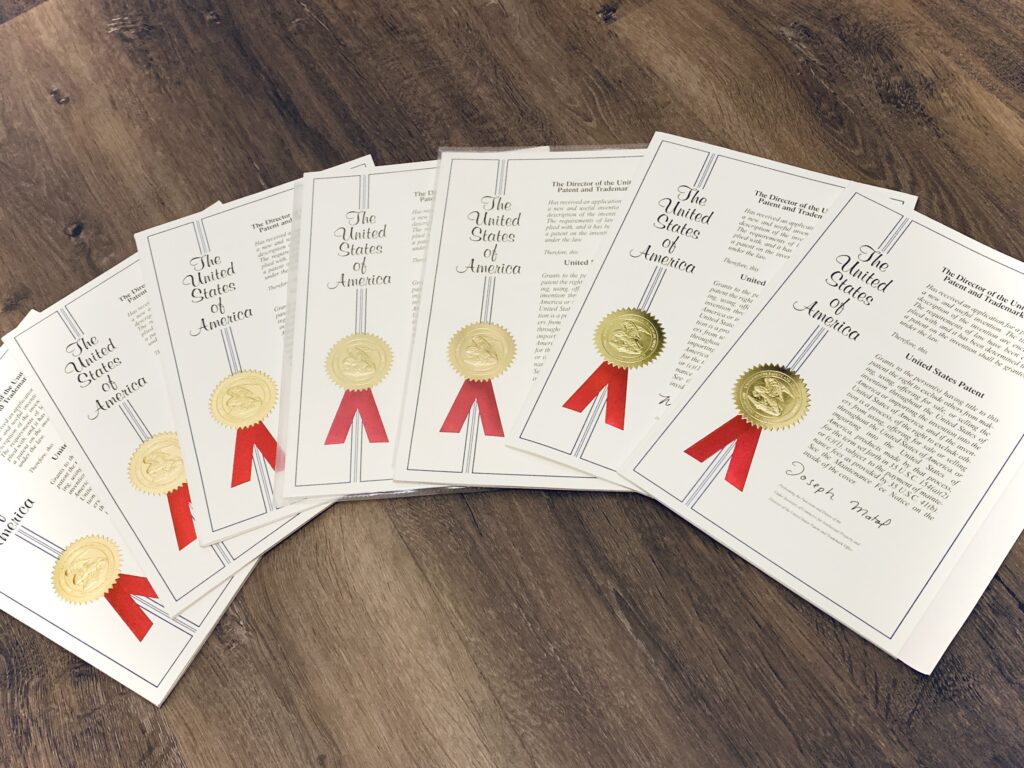It’s amazing to consider that a revolutionary idea can originate from something as simple as a napkin drawing.
If your journey includes developing any kind of tangible tech product or service, it is imperative to take those doodles on a napkin to an enforceable legal asset. It isn’t just a prudent decision, but a necessity. This guide delineates the process of turning your initial ideas into protected, patented creations through the avenues offered by the United States Patent and Trademark Office (USPTO).
Why Consider a Patent for Your Tech Brainchild?
Your invention journey might have started with a doodle on a napkin, but why should it take the formal route of patenting? Bringing your tech ideas to the public eye places them at risk of being copied. Obtaining a patent not only safeguards your brainchild but also fosters avenues for commercial success and collaborations, enhancing its intrinsic value in the marketplace.
Navigating through the Types of Patents
As you steer from napkin sketches to a robust invention, understanding the types of patents becomes your roadmap to securing it rightfully. The USPTO categorizes patents chiefly into:
- Utility Patents: The preferred choice for tech aficionados, utility patents shield the functional aspects, the ‘how it works’ of your invention, arising possibly from a sudden spark noted on a napkin.
- Design Patents: If your napkin drawing emphasized a unique aesthetic, a design patent should be your pick. It safeguards the visual elements, the ‘how it looks’ of your creation.
Why is Opting for a Utility Patent Often More Beneficial?
Though both types of patents hold significance, utility patents often take the front seat, especially when your napkin drawings conceptualize a functional breakthrough. These patents offer a broader safety net, securing the heart of your invention, its functionalities, for a period extending up to 20 years from the filing date. Meanwhile, design patents, although vital, tend to cover a narrower spectrum, focusing mainly on the aesthetic components of your innovation.
A Patent Story to Remember: The Inception of the Slide-to-Unlock Feature
To highlight the paramountcy of patenting, let’s delve into the celebrated narrative of Apple’s “slide-to-unlock” feature. What might have started as a rudimentary sketch transformed into a defining aspect of smartphone user experience, demonstrating the monumental potential lying in the journey from napkin drawings to patented functionalities. This story stands testament to the power and recognition a well-crafted patent can offer in the tech landscape.
Should You Journey Alone in the Patenting Process?
Navigating from a napkin drawing to a viable product is exhilarating. But when it’s time to patent, should you walk alone? While taking charge might seem appealing, the patenting terrain is intricate, filled with legalities that demand expertise. Hence, engaging professional counsel ensures your novel idea, which originated perhaps on a napkin, transitions to a patented invention seamlessly, upholding its true value and potential.
What Lies Ahead: Managing Your Patent Post Approval
Securing approval for your patent is just the beginning. The journey ahead involves sustaining your patent rights, which incurs maintenance fees over time. Being cognizant of the ensuing costs ensures that your invention, crafted meticulously from a napkin drawing to a functional product, enjoys sustained protection and exclusivity.
In Conclusion
Embarking on the patent journey, from initial napkin drawings to a fortified legal protection through USPTO, is indeed a rewarding endeavor. Each step, grounded in understanding and strategic decisions, paves the way for your invention to shine brightly in the competitive tech world. As you stand with a potentially landscape-altering invention, remember that it all began with a simple drawing, and now it’s poised to steer towards a horizon glittered with opportunities and recognition, safeguarded by the robust shield of a patent.


